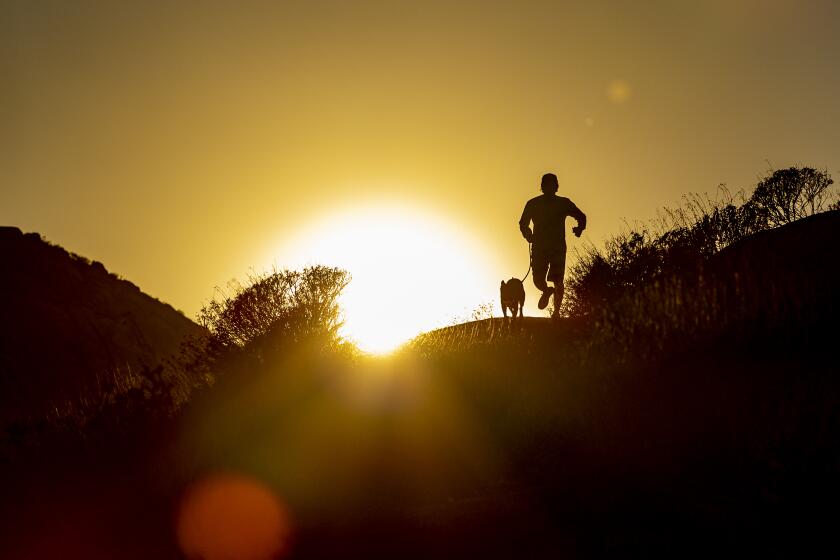Seeking stamp of approval
- Share via
Months after Japan attacked the United States at Pearl Harbor, the U.S. government imprisoned Robert Ichikawa behind barbed wire in a desolate World War II internment camp. But the Torrance resident volunteered for the U.S. military anyway. He wanted, he said, to prove his loyalty to his American homeland over his ancestral land of Japan.
More than 30,000 Nisei, or second-generation Japanese Americans, did likewise by volunteering for military service during World War II. Many of them joined the mostly-Nisei 442nd Regimental Combat Team and 100th Infantry Battalion, whose valor under fire made it among the most highly decorated units in U.S. military history.
Others joined the Military Intelligence Service as interrogators, translators and interpreters, crucial roles credited with shortening the war by as many as two years. About 300 Nisei women served in the Women’s Army Corps and Cadet Nurses Corp.
Now, as Japanese American World War II veterans rapidly dwindle in number -- most are in their 80s -- their supporters are pushing for a commemorative postage stamp in their honor.
And they have attracted support from an unexpected quarter: the Jewish community.
At a Los Angeles news conference Thursday, the Simon Wiesenthal Center and Museum of Tolerance pledged support for the campaign and called on the U.S. Postal Service to approve the proposal when its commemorative-stamp review committee meets next month.
Rabbi Abraham Cooper said his Wiesenthal Center has had a long relationship with the Nisei veterans, stemming from an initial friendship with one of them, the late Clarence Matsumura, who helped liberate Holocaust survivors from the Dachau concentration camp.
Last month, Port Hueneme City Councilman Murray Rosenbluth successfully sponsored a city resolution supporting the campaign. He, too, was moved by the mostly-Nisei 522nd Field Artillery Battalion’s aid in liberating Dachau. It was a “good deed that resonated with me,” Rosenbluth said at the City Council meeting.
Rabbi Shmuel Novack of Chabad Southside in Jacksonville, Fla., joined the campaign because his grandfather, Lt. David Novack, commanded many of the Nisei soldiers as an officer in the 100th Battalion. The younger Novack traveled to a Las Vegas reunion of Nisei war veterans last month, hearing for the first time their stories of his grandfather’s bravery, including shattering his leg on a land mine.
Now, Novack said, he is a passionate supporter of the stamp campaign.
“They have stamps for flowers and animals and Elvis Presley and Superman,” Novack said in a phone interview. “But these guys are living Supermen. They did so much despite all of the adversity they faced at home.”
The campaign was launched four years ago but has just begun to pick up steam. It has attracted support from more than 50 California cities and 10,000 petition signers.
Community organizations, such as the American Jewish Committee and Japanese American Citizens League, have endorsed the campaign. So have numerous federal and state lawmakers, including Sen. Daniel Inouye (D-Hawaii), a 442nd veteran who lost an arm in battle. Proposed resolutions are pending in Congress and in several states, according to Wayne Osako, stamp campaign chair.
Osako said the Postal Service has issued commemorative stamps honoring minority veterans in the past. It issued a stamp in 1984 honoring Latino veterans and another a decade later recognizing the African American Buffalo Soldiers, Osako said.
The Nisei veterans stamp would be the first to honor an Asian American military group, he said.
The Postal Service’s citizens’ stamp advisory committee is to begin formally reviewing the proposal next month in a selection process that usually takes about three years, Osako said. The stamp could be issued in 2010.
But that is a race against time for many of the aging veterans and their families.
Gardena resident Chizuko Ohira, one of the three Nisei women who first launched the campaign, said her husband, Ted, a veteran, was an avid stamp supporter. But he died in March, she said, before seeing his dream realized.
“These guys are getting on in their 80s and 90s,” she said, “so we really have to push for the stamp this year.”
Several veterans attended the Thursday news conference. They were bused in by the Go For Broke National Educational Center, a nonprofit group that preserves the legacy of WWII Japanese American veterans.
Don Seki, a Honolulu native, lost his arm to German fire, shortly after helping mop up after the 442nd’s most famous battle: freeing a Texas battalion trapped in the Vosges mountains of France. In that battle, the Nisei forces lost four men for every Texan saved.
Seki believes a stamp would help memorialize their story and bring pride to younger generations of Japanese Americans.
Henry Ikemoto, 84, who grew up in Stockton, was attending college at Baylor University in Texas when he began reading of the heroic exploits -- and enormous casualties -- of the 442nd. Although his teachers urged him to stick with his studies, Ikemoto said, “I just couldn’t stay in school while my friends were going to war and getting killed.”
He signed up for the 442nd and also served in the Military Intelligence Service, where he interrogated Japanese military officers after their surrender.
Ikemoto said he served with pride even though his family members lost their celery business and nearly all of their possessions when they were interned in Arkansas. A commemorative stamp would signify at last that Americans appreciated that service, he said.
“It will show the American people what Japanese Americans did -- that people who look like foreigners can do so much for this country,” Ikemoto said. “It will say that we’re good Americans.”
More to Read
Sign up for Essential California
The most important California stories and recommendations in your inbox every morning.
You may occasionally receive promotional content from the Los Angeles Times.














